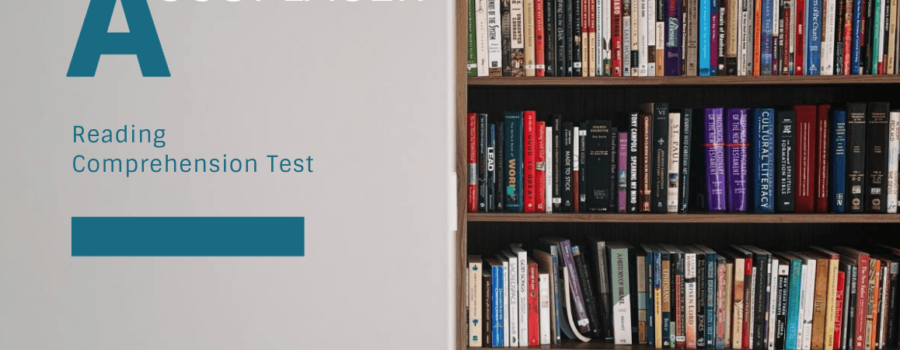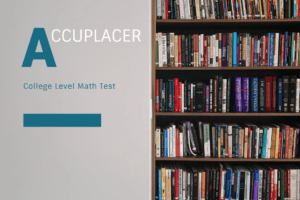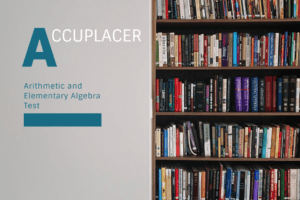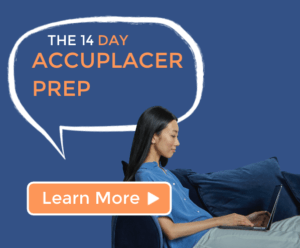How to Pass the Accuplacer Reading Comprehension Test
Learn to read and read to learn. That is how students should approach the accuplacer reading comprehension test. Contrary to common misconception, you should not confuse your ability to speak with reading or writing.
Students can expect to get (20) questions in total. However, the companion form for special accommodations presents (40) questions. Some of the passages are specifically commissioned while others are from the published source material.
The test is in conjunction with single aspect passages and the paired passages, which look at the topics from multiple angles. The nature of the reading passages could be either fiction or non-fiction. Similarly, the content of the passage could be social, historical, scientific, or related to humanities. Also, readability of passages could vary from narrative, informative, argumentative to self-explanatory.
For the ease of students, the sections and sub-sections in this article are simple so that you can understand the key concepts to pass the accuplacer’s reading comprehension exam.
Length of the Passages
The length of short passages is generally from 150 to 300 words. Short passages, however, have the lowest word count of around 75-100 words. A long passage normally includes 350-400 words, and a passage is medium within 250-300 words.
Why Read a Passage?
First, you will understand how the identification of purpose is relatively easier than the position of the author. Passage could be informative and entertain at the same time. And persuasion from the author requires students to be skeptical about the text.
Descriptive writing structure, for instance, has adjectives that are more loaded and adverbs that convey a more layered image to the reader.
Types of Passages
The ability to pinpoint a multitude of passages is at the center of the accuplacer comprehension test. For example, you will answer questions about a non-fictitious expository passage that is comprehensive and informative. Technical passage, on the other hand, is mainly a part of the medical and tech fields to explain a process or object.
Difference between Comparison and Contrast
To compare and contrast is how students identify when the writer two similar things for different purposes. Students recognize the comparison passages relatively more easy than contrast.
The only way you can master the difference is to understand the writer cause and effect carries the weight in writing. However, many students tend to focus on the identification of selected words that are associated with each passage.
Also, reading a passage means understanding the point of view, and the plotline writer is trying to set. Similarly, the most commonly used passages follow the first and third-person point of view. The trick is to not confuse the opinion of an author to the perceptiveness of the generalized text.
Main Ideas and Supporting Details
Students will be required to identify topics of the main ideas of the passage. The subtlety between two often throws students off guard. In simple terms, a topic is the subject of a text while the main idea supports the argument presented by the author.
Once the topic and main idea of a particular passage are clear, you can move on to the supporting details, which rely on evidence and main points. To prove the validity of their ideas, authors add details to reinforce a larger point. That said, a supporting detail could be informative or persuasive.
Evaluation of Passages
To grasp a logical conclusion of a text is why you read a passage in the first place. Students have to inform whether they agree with the subject matter. Furthermore, you will be required to draw your conclusion. You can state your conclusion directly or imply through written information.
Reading requires equally as much confidence as writing a text. You can even draw implications not stated directly by the author but that he/she hints at throughout a passage. Also, many students practice summarization technique to structure and format main ideas and supporting details. The major benefit of making a summary is to improve your paraphrasing skills. Consequently, paraphrasing comes across naturally to students.
Making Predictions and Inference
Students will notice that reading a good passage will have a more engaging experience. And the hallmark of every active reader is to make predictions. However, the nature of the prediction is not definitive. You can always make the necessary revisions.
To make inferences, you should stick to the available source material. Students should also avoid using information that is beyond the given passage requirements. Additionally, you find some implied inference, but the writer does not necessarily have to mention it.
The sequence of a text can be in ascending or descending form. And the better you understand the sequential pattern, the better you can infer.
Analyze Critical Thinking
Critical thinking skills are achievable through understanding numerous kinds of writing and the underlying purpose of the passages. However, many students feel cobbled up and rush to immediate judgment of a text.
You have to distinguish between opinions, facts, and fallacies. And analyzing the writing style of the author will help you draw sound conclusions. As a reader, do not just rely on reliable sources but also discard stereotyping or biased viewpoints.
You Can Rely on UGO Prep
We understand how social sharing and group study sessions can keep you motivated and compete with your friends. UGO Prep will provide will not just provide you with all the necessary resources but will brush up your hidden skills to pass the ACCUPLACER’s reading comprehension test. Rest assured, UGO Prep would guide you through complex sentence structures, passages, and statements. We know how students want to save time, which is why we aim to provide material that students are likely to encounter.






